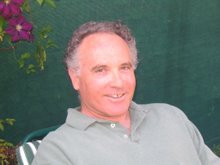Many years ago, I researched a play dramatizing the two Supreme Court cases preceding the Trail of Tears. That research required a reading of the seminal 1919 biography of Chief Justice John Marshall by Albert J. Beveridge. In volume 4, p. 382-4, Beveridge briefly outlined an 1823 U.S. District Court case from Charleston, South Carolina - Elkison v. Deliesseline.
At that time, Supreme Court justices presided over Federal District Courts. In that case, Associate Justice William Johnson, a Charlestonian and State's Rights advocate (who had been appointed by Jefferson to obstruct the Federalism of Marshall), struck down a draconian state law restricting the movements of free people of color. As in the civil rights cases of the 1950's, Johnson cited Article One, Section 8 of the Constitution - the commerce clause - as the basis for upholding the rights of Henry Elkison, a free person of color.
I filed this in the back of my mind as a promising dramatic subject. A few years later, when I came back to it, I finally recognized the obvious connection of the case to the Denmark Vesey slave uprising of 1822. Initial research - a 1935 scholarly article by Philip Hamer in the Journal of Southern History and a very readable 1983 essay by Scott W. Stucky in the North Carolina Central Law Review - made the connection crystal clear. The slavocracy of South Carolina, terrified by the Vesey conspiracy, turned to the legislature for extreme police measures to control the servile population. They sought to insure that their slaves never happened upon a free person of color. That very freedom was deemed seditious.
I sought out biographies of Denmark Vesey - by Donald R. Egerton, William Freehling, John Lofton and David Robertson. That raised some interest in Vesey's co-conspirators, especially Gullah Jack. I contacted (via e-mail) Susan R. Silverman (Gullah Jack's biographer) at Winthrop College. Dr. Silverman alerted me to an article in the Charleston Courier reviewing the treatment of Vesey in the performing arts. That article enlightened me to the existence of Dorothy Heyward's play Set My People Free, a dramatization of the Vesey Rebellion. (DuBose Heyward, incidentally, was a descendant of Nathaniel Heyward, one of the judges for the kangaroo court which convicted Vesey.) Quickly, it became apparent that my play would be shaped by the content and quality of the earlier play by this Heyward woman.
I set out to find the play. I read James M. Hutchisson's biography of DuBose Heyward. While reading this book, I supplemented the information with internet searches. One of those searches dredged up an entity called the DuBose and Dorothy Heyward Memorial Fund. The Trustee for the Fund is Mr. Albert Cardinali of Thacher, Proffitt and Wood, L.L.P. Naturally, I assumed that the Fund would have a copy of the play. Confidently, I contacted Mr. Cardinali. Unfortunately, the firm's offices at the World Trade Center were destroyed on 9/11. None of the attorneys were killed, but the papers of the 150 year old establishment were destroyed, Set My People Free among them.
I continued my search with the inter-library loan department of my local library. The best information suggested that only two copies of the play existed on the entire planet - one at the South Carolina Historical Society (with an alternate title, Charleston, 1822) and one at the Detroit Public Library. The SCHS was willing to photo-copy the play at 25 cents per page. After a long week, the script was in my hands. It was obvious to me, unfortunately, that that copy was an early draft.
Now, I was down to one last hope - the Detroit Public Library, which promptly informed my librarian that the play could not be lent to me under any circumstances. Clearly, it was time to call in the cavalry - Mr. Cardinali. Within a week, the script was in my hands. It looked like a final draft (excepting a long scratched-out section), complete with properties list. I spent the next few weeks processing the script. It has been rescued.
Saturday, June 23, 2007
Subscribe to:
Post Comments (Atom)

1 comment:
How did you reach Mr Cardinali?
Post a Comment